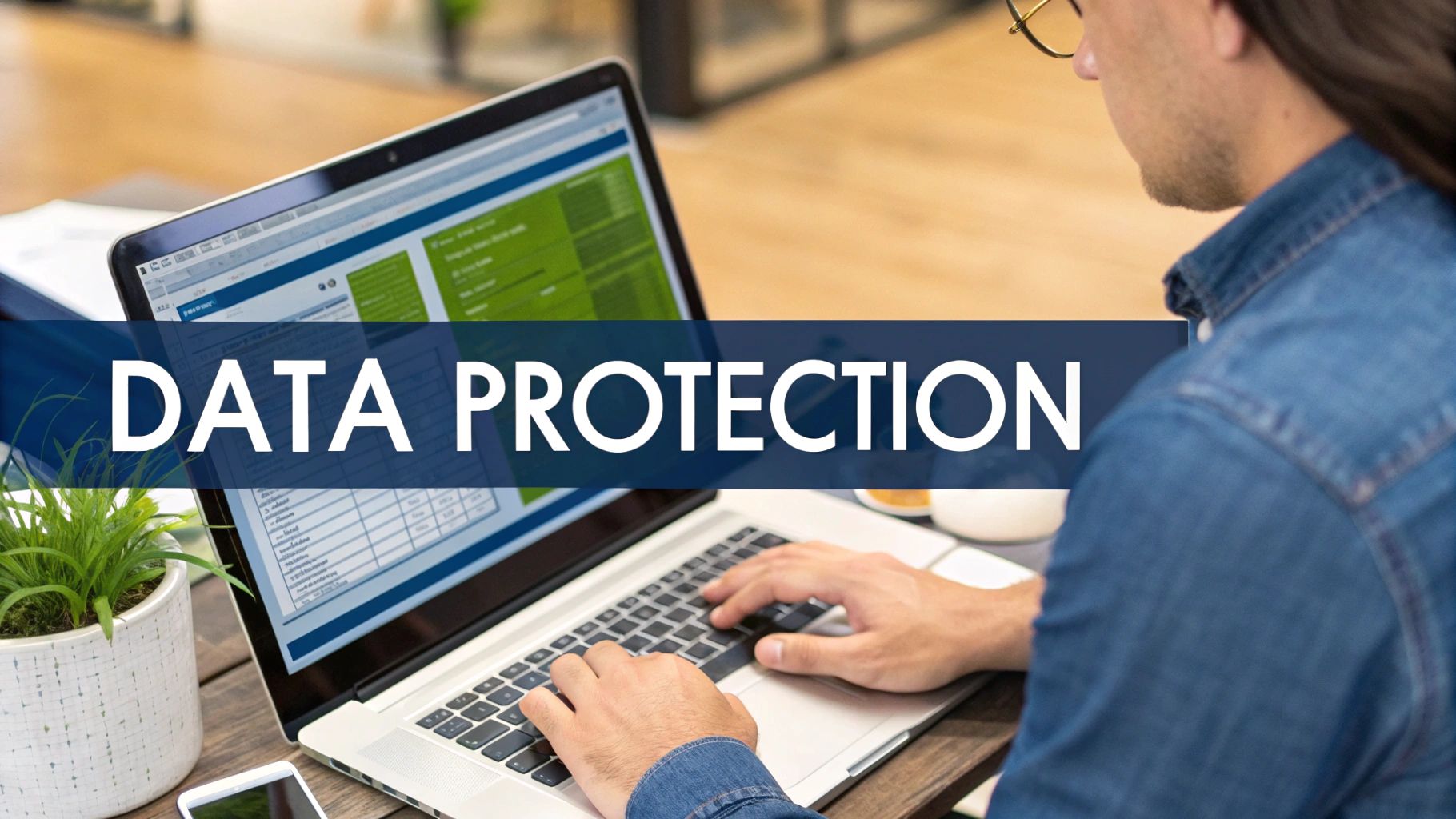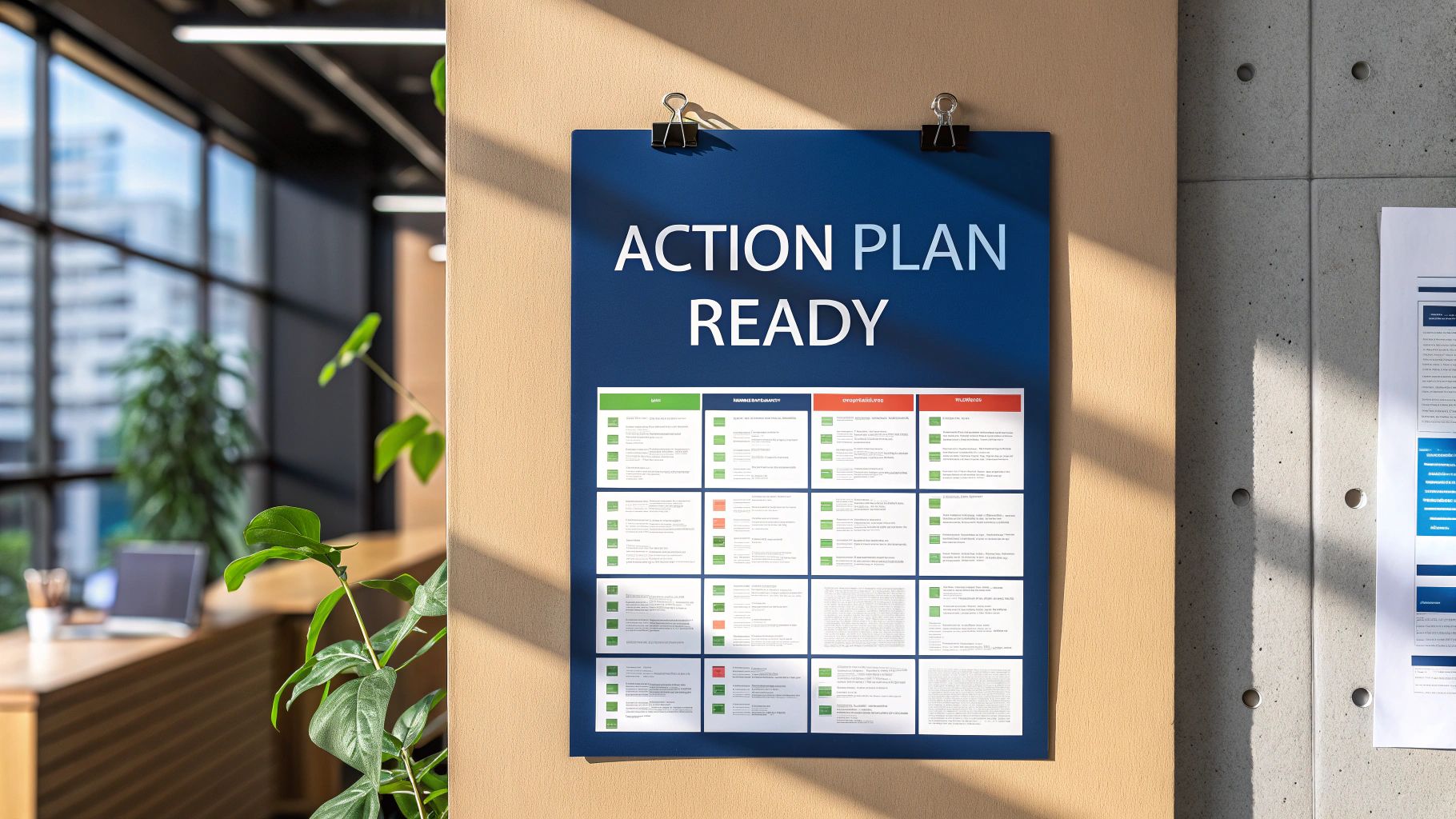The Ultimate Guide to Building an Effective Security Incident Response Plan
Understanding the Critical Need for Incident Response Planning

Security breaches and cyber attacks continue to grow more frequent and complex, making a robust response plan essential for any organization. When incidents occur, having clear procedures in place can mean the difference between a minor disruption and a major crisis. A well-designed security incident response plan serves as a practical guide for teams to follow when security events happen.
Why Traditional Security Approaches Fall Short
Basic security tools like firewalls and antivirus software play an important role but can't guarantee complete protection. This is similar to home security - while good locks deter break-ins, determined intruders may still find ways to enter. For this reason, organizations need structured plans for handling incidents after they occur. Quick, coordinated responses help minimize damage and get operations back to normal faster.
Proactive Planning Makes the Difference
Smart organizations know they must prepare for incidents before they happen, not just react afterwards. This means creating detailed response plans, running practice scenarios, and setting up clear communication channels. The impact is clear - companies that respond quickly and effectively to security incidents face less disruption and maintain stronger customer relationships. However, a concerning 45% of organizations still lack formal incident response plans, leaving them vulnerable. For more data on this topic, see FR Secure's incident response statistics.
Key Benefits of a Strong Plan
Having a solid incident response plan delivers several concrete advantages. When threats emerge, teams can detect and contain them more quickly, reducing potential harm. The plan ensures the right people get notified immediately through defined escalation procedures. It also provides guidelines for communicating updates to employees, customers and other stakeholders to prevent confusion.
Evaluating Your Organization's Readiness
Taking stock of your current incident response capabilities is an important first step. Review your existing security measures, identify gaps in your defenses, and assess how well your team handles incidents today. This gives you a clear picture of what needs improvement. You can then develop response procedures that protect critical data and keep your business running smoothly when security events occur.
The Financial Impact of Incident Response Preparedness

A strong security incident response plan does more than just protect data - it makes sound business sense. When organizations invest in preparedness, they see real financial benefits through faster recovery times and reduced costs. The numbers show that taking action before incidents occur leads to significant savings compared to scrambling to respond after the fact.
Quantifying the ROI of Incident Response
The financial impact of incident response involves both obvious and hidden costs. While direct expenses like investigations and legal fees are easy to track, the indirect costs often hit harder - damaged reputation leads to lost sales, while disrupted operations mean lost productivity. For example, when customers lose trust after a breach, both current revenue and future growth take a hit.
Following regulations isn't just about compliance - it's about avoiding costly fines. A well-designed incident response plan helps shield organizations from these financial penalties. The comprehensive approach considers and addresses all the ways security incidents can impact the bottom line.
Organizations that invest in incident response teams and formal plans see measurable results. According to IBM's research, having these elements in place reduces breach costs by an average of $473,706. These savings come from the ability to detect, contain and resolve incidents faster through defined processes. For more details on the financial benefits, check out these incident response metrics that matter.
Communicating the Value of Preparedness
Making the case for incident response funding requires showing stakeholders the hard numbers. This means clearly outlining both the costs of preparation and the much higher potential costs of being caught unprepared. Real examples and data help demonstrate how proactive investment prevents larger losses down the road.
Building a Financially Sound Security Posture
Smart security is a business essential, not just an IT expense. An incident response plan is central to protecting both data and finances. When organizations make this investment, they show partners and customers they take security seriously. The resulting trust helps drive sustainable growth while managing risks.
Essential Components of an Effective Response Plan
Having just a basic template for a security incident response plan isn't enough to handle real incidents. Your plan needs strong foundations built on real-world experience and proven practices. Let's look at what makes incident response plans actually work in practice.
Defining Roles and Responsibilities
Clear roles are essential during a security crisis - similar to how emergency responders each have specific duties during a disaster. When everyone knows their exact responsibilities, the team can work smoothly without wasting precious time figuring out who should do what.
Key roles that need to be clearly defined include:
- Incident Response Team Lead: Coordinates overall response and decision-making
- Security Analysts: Handle technical investigation and containment
- Communication Lead: Manages all messaging internally and externally
- Legal Counsel: Provides guidance on regulatory requirements and legal exposure
This structure creates clear reporting lines and accountability. As a result, teams can focus on their specific tasks rather than getting caught up in confusion about who's in charge of what.
Establishing Communication Channels
Good communication can make or break an incident response. Picture trying to coordinate a response with no reliable way to share updates - it would quickly fall apart. For this reason, your plan needs to spell out exactly how information will flow during an incident.
These are the key communication elements to establish:
- Internal Communication: Set up dedicated channels like specific Slack rooms or conference bridges to keep response teams coordinated
- External Communication: Create pre-approved message templates for different audiences to ensure consistent and accurate updates
- Escalation Protocols: Map out exactly when and how to involve senior leaders or outside parties based on incident severity
Creating Actionable Procedures
A security incident response plan is only useful if teams can actually follow it under pressure. The procedures need to be clear and practical - think of them as step-by-step recipes for handling different types of incidents.
Essential procedure components include:
- Incident Identification and Verification: Clear criteria for confirming genuine incidents
- Containment Strategies: Specific steps to isolate affected systems quickly
- Eradication Procedures: Detailed methods for removing threats completely
- Recovery Steps: Process for safely restoring normal operations
- Documentation Requirements: Templates and guidelines for recording all response actions
By breaking down the response into concrete steps, teams have clear guidance to follow even in stressful situations. This methodical approach helps ensure nothing important gets missed during critical response phases.
Maintaining and Updating Your Incident Response Plan

A security incident response plan needs ongoing attention and care - much like practicing fire drills prepares you for real emergencies. Regular updates keep your plan ready to handle new threats while staying aligned with your organization's current needs and capabilities.
Why Regular Updates Are Crucial
New security threats emerge constantly while organizations evolve their systems, software, and teams. When you add new tools or services, like cloud platforms, you introduce potential vulnerabilities that your incident response plan must address. This makes having an adaptable, current plan essential for maintaining strong security.
Building a Review Cycle
Set up scheduled reviews of your incident response plan to spot areas needing improvements and ensure it follows security best practices. Most organizations conduct reviews annually, though you may need more frequent updates after major changes to your systems or when new threats arise. The NIST SP 800-61 Rev. 2 Guide recommends yearly reviews to help organizations mature their response capabilities and meet security goals.
Incorporating Lessons Learned
Each security incident provides valuable insights to strengthen your response plan. After managing an incident, conduct a detailed post-incident review to identify what worked well and what needs improvement. For example, if your team faced communication challenges during an incident, update the plan with clearer protocols and channels. This feedback loop helps you continuously enhance your incident response abilities.
Maintaining Stakeholder Engagement
Keep your team involved in maintaining and practicing the response plan. Run simulation exercises to test the plan's effectiveness and ensure everyone knows their roles. Gather input from team members about potential gaps or areas for improvement. This hands-on approach builds security awareness across your organization and keeps the plan practical and ready for real incidents.
Testing and Training: Bringing Your Plan to Life

Just like a fire drill, a security incident response plan requires consistent practice to work effectively during an actual emergency. Having a written plan isn't enough - your team needs hands-on training to turn that plan into real-world skills they can rely on when incidents occur.
Designing Effective Exercises
The best exercises mirror real scenarios your organization might face. For example, running a phishing simulation shows how employees handle suspicious emails in practice, while testing a ransomware response reveals how well your team communicates and handles technical challenges under pressure. These drills highlight what works and what needs improvement in your response plan.
Types of Exercises
Different training approaches serve distinct purposes. Tabletop exercises involve team discussions to work through incident scenarios and test decision-making. Live-fire exercises create simulated attacks to evaluate technical skills in real-time. Hybrid exercises blend both methods for comprehensive testing. Mixing these approaches helps fully evaluate your security incident response plan.
| Exercise Type | Description | Benefits |
|---|---|---|
| Tabletop | Discussion-based scenario walkthrough | Tests decision-making and communication |
| Live-Fire | Simulated attack on systems | Evaluates technical skills and response times |
| Hybrid | Combination of tabletop and live-fire | Offers a balanced and comprehensive approach |
Measuring Exercise Effectiveness
Running exercises alone isn't enough - you need clear metrics to assess team performance. Before each drill, establish specific measurable goals like detection speed, containment success rate, and communication clarity. This data shows exactly where your team excels and which areas need more attention in future training.
Incorporating Feedback and Continuous Improvement
Gather input from everyone involved after each exercise. This reveals gaps in your security incident response plan and highlights specific challenges team members faced. Use these insights to update procedures and training materials, ensuring your team has the skills needed for future incidents. Regular practice builds confidence while keeping security awareness high throughout your organization. This proactive training minimizes potential damage when real security events occur.
Tools and Technologies for Incident Response
Just like a mechanic needs specialized tools to diagnose and fix car problems, security teams need the right technologies to effectively handle incidents. The proper tools can dramatically improve how quickly and successfully your team detects, analyzes, and resolves security threats.
Essential Technologies for Incident Response
A strong incident response toolkit relies on several core technologies working together:
- Security Information and Event Management (SIEM) Systems: SIEM tools act as your security control center by collecting logs from across your network. They analyze data in real-time to spot suspicious patterns and alert your team quickly.
- Endpoint Detection and Response (EDR) Solutions: EDR platforms focus on monitoring individual devices like laptops and workstations. They track system activity and help identify the source and scope of potential infections through detailed forensics.
- Threat Intelligence Platforms: These systems gather data about new and emerging threats from multiple sources. Having advance warning about potential attacks allows your team to prepare and update defenses proactively.
- Security Orchestration, Automation, and Response (SOAR) Platforms: SOAR tools speed up incident handling by automating key response actions like isolating infected systems. This quick automated response helps limit damage while freeing up analysts for strategic work.
- Case Management Tools: These solutions help teams document incidents, track response activities, and coordinate communication. Good documentation ensures nothing gets missed and helps teams learn from each incident.
Building Your Technology Stack
The right mix of tools depends on your specific needs. Important factors include your organization's size, IT environment complexity, and most common threat types. For example, small companies often do well with cloud-based SIEM tools, while large enterprises may need more advanced on-site solutions.
| Tool Category | Considerations |
|---|---|
| SIEM | Log management capabilities, real-time threat detection, integration with other tools |
| EDR | Endpoint visibility, threat hunting capabilities, automated response options |
| Threat Intelligence | Relevance of threat data, integration with existing security tools, actionable insights |
| SOAR | Automation capabilities, playbook customization, integration with other security tools |
| Case Management | Incident tracking, reporting features, collaboration tools |
Integrating and Optimizing Tools
Your incident response tools need to work together smoothly. Data should flow easily between systems to enable automated workflows and quick information sharing. Regular updates and staff training help ensure your technology stays effective as threats evolve.
Want to spend less time on documentation and more time on security? Learn more about Whisperit to see how AI-powered dictation can speed up your documentation process while maintaining accuracy.